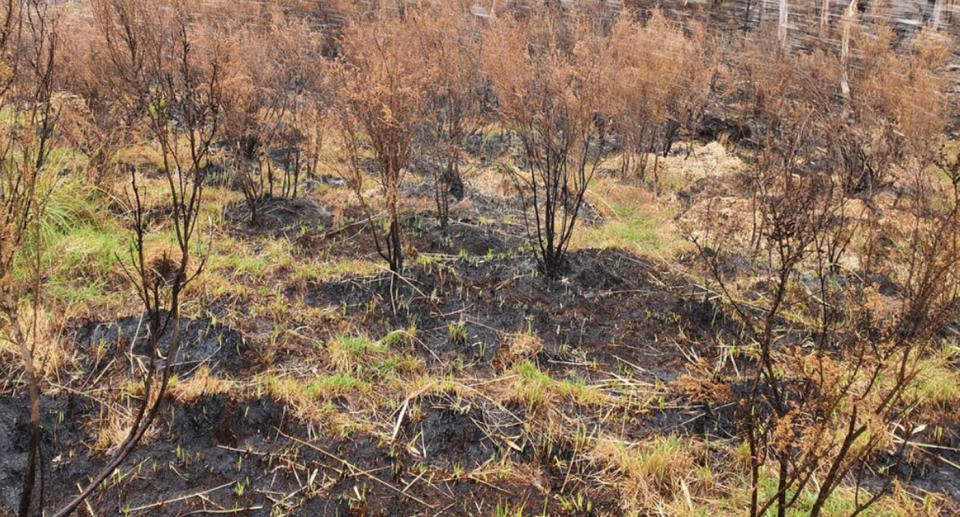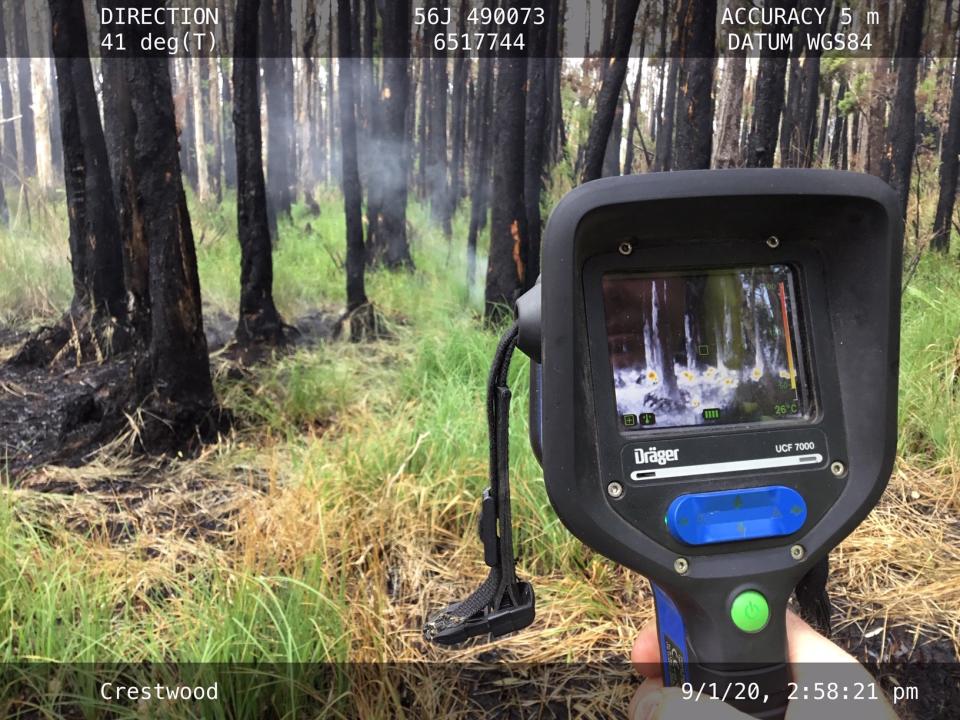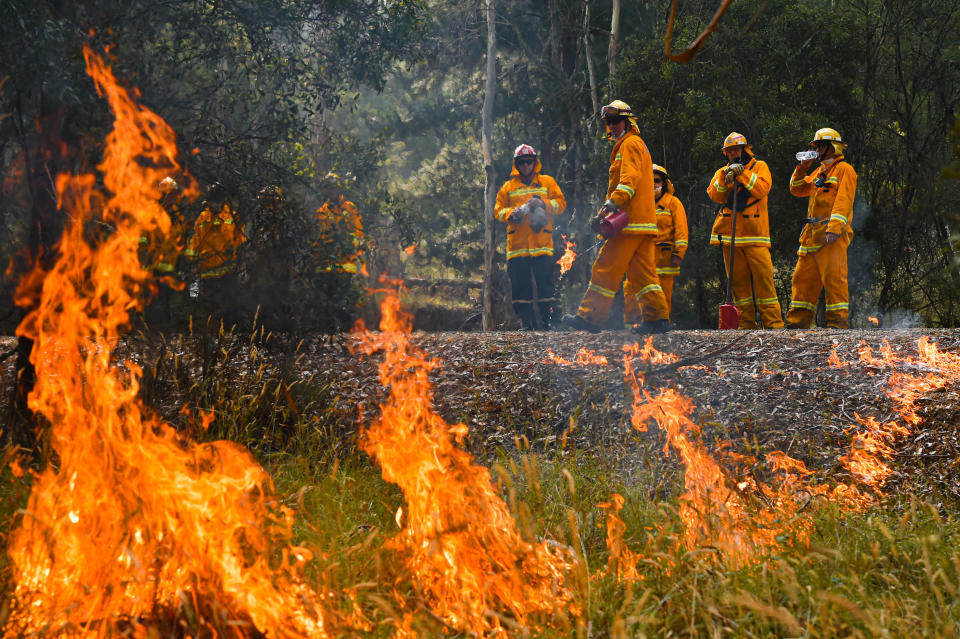'Invisible to the naked eye': The bushfire threat lurking in this photo
To the naked eye some smoking grass might seem like a harmless sight, but hidden beneath there could be a silent but deadly threat brewing.
Fires burning under a surface layer of peat can reach temperatures of up to 400 degrees, but give little indication of the possibility this could quickly turn into a sizzling blaze without warning.
“Game-changing” thermal camera technology, however, has allowed firefighters the ability to quash thousands of threats before they have the chance to transform into anything more sinister.
Inspector Chad Wallace, Duty Commander at Fire and Rescue NSW described thermal imaging cameras as a “really handy tool” with huge potential to save lives and prevent bushfires.

“They can pick up things that otherwise the naked eye couldn’t see,” Insp Wallace told Yahoo News Australia.
“As soon as you start looking through a thermal imaging camera held up to your eye, you’ll be able to see the actual fire so it lets you find the fire quicker, and it also lets you find casualties quicker.”
Woolworths offers emergency bushfire workers exclusive discount
Warning over floodwater debris as expected 40-degree spike brings fire danger
'Wettest two days in months': Bushfire victims warned of floods
In the case of bushfires when visibility is down to zero, these cameras can tell firefighters exactly where a fire is, what it’s doing and where it will travel next.
“When it eventually went under every firetruck in 2005, it was a game changer.
“You can put fires out quicker because it allows you to see through smoke, and you can find exactly where people are,” Insp Wallace said.

Helping save water, time and resources
With the thermal technology presenting direct information about danger zones, firefighters are able to stay one step ahead and take action quicker in emergency situations.
“You can put your resources and also your limited water exactly where it’s needed,” Insp Wallace said.
“Instead of having to drown a whole area the size of a football field and waste all that time and water, you can narrow down the point of origin of a fire even under thick mulch to get the hot spots.”
From up to 50 metres away, firefighters can be fed information about the temperature of a certain spot and then determine which areas they need to attack with water first.

Insp Wallace said the devices have been used at thousands of callouts across NSW, and undoubtedly helped minimise the impact and spread of bushfires.
In an example shared by National Parks and Wildlife NSW on Tuesday, a thermal camera was shown being used on a patch of smouldering peat at the Lake Innes Nature Reserve near Port Macquarie.
The department explained how such hotspots often caused fires to re-ignite, and the devices helped to identify problem areas so they could be tackled by pumping water or setting up sprinklers.
Guess what?
Peatfire can easily burn by itself when drought season naturally. It is starts with the smouldering fire inside the ground and smoke outside.
Fun fact, forest fire happen when this situation involve by human activities. Done sharing 🙃 pic.twitter.com/wsRyFS668W— classic blue (@raidezar) November 6, 2019
Insp Wallace had attended recent blazes all over the state throughout the bushfire crisis using the thermal cameras, including in Casino, Port Macquarie, Grafton, Wollondilly and the south coast most recently.
He said the cameras were most valuable when a fire front was travelling towards crews, as it allowed them to calculate how tall the flames were, the movement of the fire and how hot it was burning.
With this crucial information, firefighters can then adjust their tactics accordingly and decisions regarding which resources they call in for backup.
“It also gives you a guide about when it might be time to evacuate. It changes your whole strategy of how you fight the fire.”
Do you have a story tip? Email: newsroomau@yahoonews.com.
You can also follow us on Facebook, Instagram and Twitter and download the Yahoo News app from the App Store or Google Play.


